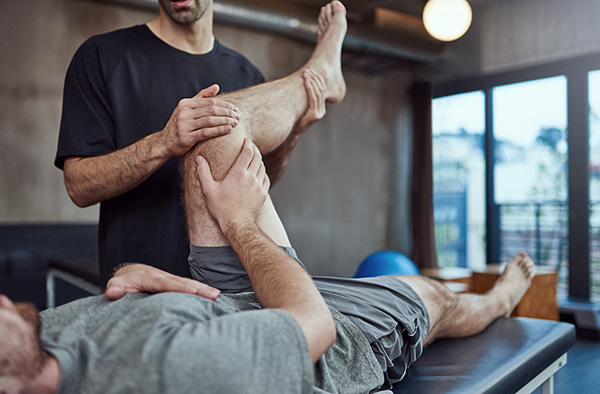We use cookies to help provide you with the best possible online experience.
By using this site, you agree that we may store and access cookies on your device. Cookie policy.
Cookie settings.
Functional Cookies
Functional Cookies are enabled by default at all times so that we can save your preferences for cookie settings and ensure site works and delivers best experience.
3rd Party Cookies
This website uses Google Analytics to collect anonymous information such as the number of visitors to the site, and the most popular pages.
Keeping this cookie enabled helps us to improve our website.
Sports Injury Clinic
Here we introduce how to deal with sprains and strains. We show how to deal with minor sports injuries.
We are very lucky to have doctor John Heaton at the surgery who specialises in orthopaedic and sports medicine, who can also provide acupuncture treatment where needed.
The immediate care of common sports injuries (sprains, strains, bruises, etc.) consists of a four step programme that should be followed as soon as an injury occurs. The four part programme is called RICE, and stands for Rest, Ice, Compression, and Elevation.

Rest
As soon as an injury occurs, it is important to stop the activity immediately, otherwise you risk further damage to the injured part. When a body part has become injured, the body reacts with an inflammatory process which causes swelling, redness, local increase of heat in the area and pain. The degree of each of these dependant on the severity of the injury.
Ice
Put ice on the injured part as soon as possible after the injury. Ice or cold, specifically, controls swelling by constricting the blood and lymph vessels, decreases muscle spasms (which often accompanies injury), and decreases some of the discomfort and pain caused by the inflammation. By reducing llic swelling that collects around the injured area, the rehabilitation time will be lessened and you will be able to return to your sport more quickly. The ice should be applied for 15-20 minutes. To obtain maximum benefit, apply ice every 3 hours As the pain and swelling decreases reduce the application of ice to twice daily. The ideal time to apply the ice is after performing any exercises given to you by your doctor or Physiotherapist. Under no circumstances should any form of heat be applied e.g. hot bath which would increase swelling and inflammation.
Applying an ice pack:
- Make an ice pack by filling a cold damp towel with ice cubes or frozen peas
- Get comfortable with the injured part well supported in elevation
- Rub a small amount of oil (e.g. baby oil) on the injured area to prevent an ice burn
- Put the ice pack over the injured area for 15-20 minutes (you will notice the skin turning pink)
Compression
Compression also helps to limit swelling in the injured area. After the ice treatment apply the tubi-grip bandage you may be prescribed or advised to purchase by your doctor. The tubi-grip should be worn continuously until the swelling has subsided (about 48-72 hours).
Elevation
Immediately following your injury, elevate the injured limb above the level of your heart to limit the development of swelling. This can be done by raising the affected part on a stool or similar with the limb well supported with pillows or cushions. Raising the injured limb above the level of the heart may be impractical at work or other situations. Some elevation, however, is better than none at all. For example, resting the affected leg on a stool or chair whilst sitting for knee or ankle injuries. Continue with compression and regular elevation until the swelling has disappeared. Compare your injured side with the other side to determine whether swelling is present or not.
Physiotherapists and Chiropractors
We are also very lucky to have a physiotherapist that visits the surgery from the Leicester Royal Infirmary on 3 days a week.
We are also very lucky to have a fully trained chiropractor who comes to the surgery twice a week.
Referral to both of these in house services is by appointment from a Dr only. They can decide which service is the best for your orthopaedic/back problem.
Waiting lists at these in house services are usually a couple of weeks and are on average shorter waiting lists than the local hospitals.
Strains and Sprains
If you can get to us we have a specialist "cryo-bandage" which we use to treat ankle, knee, wrist and elbow sprains. Ensure you tell the receptionist when you arrive that you have strained/sprained a joint, so we can use the equipment as soon as possible.
If you cannot get to us you need to apply a cold compress yourself, e.g. a pack of frozen peas or crushed ice wrapped in a towel. Repeatedly apply for ten minutes then take away for ten minutes.
Caution: It is dangerous to leave a cold compress against the skin for longer than ten minutes, as frostbite can occur, and it must always be wrapped in a towel or cloth, never placed directly onto the skin.
After ice treatment, a firm bandage may give support. Rest the affected area and if your ankle or knee is affected, raise it above the hip level to reduce swelling.
Source: LSMP
